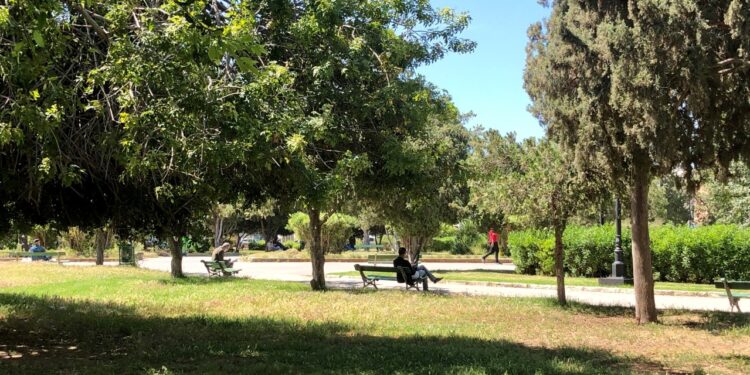Tunisia is far from meeting international standards in green spaces. According to the World Health Organization (WHO), each city dweller should have at least 10 m² of green spaces. However, the Tunisian benefits only from barely 3 m², reveals an in -depth study of the urban planner and architect Imene Zaâfrane Zhioua published in his work Desire of nature in the Great Tunis: for a dense city vegetation.
This deficit is explained by a double phenomenon: the Intensive urban zoning And the lack of spaces available in the hearts of cities. This rarity is aggravated by “urban heat islands”, a consequence of the omnipresence of concrete and the absence of plant cover, which can increase the temperature in town 3 to 5 ° C compared to rural areas. WHO also alerts that the inhabitants of urban centers are among the most exposed to the effects of climate change.
Innovative solutions for a greener city
For Imen Zafrani, the lack of land should not serve as an excuse for inaction. It advocates creative approaches: exploitation of each free space to plant trees, creation of “green corridors” connecting parks and gardens – an idea that it calls the “green thread” of the city.
She also recommends:
- the implementation of Public-private partnerships To finance the maintenance of green spaces,
- the establishment of sponsorship contracts allowing companies to support certain areas,
- there active participation of the inhabitants and neighborhood associations.
The bet of the Tunisian “green lung”
Faced with the degradation of the plant cover and the progression of the desert, the Ministry of the Environment recently launched a major project: the Tunisian “green lung”.
This “forest perimeter” will extend from the south of the wilaya of Sfax to the Algerian borders, crossing the governorates of Gabès, Sidi Bouzid, Kasserine and Gafsa.
Objectives displayed:
- brake the advance of sand and limit the arrival of dust in urban areas,
- Plant species adapted to drought,
- Promote a local economy articulated around sustainable agriculture, the valuation of treated waters and renewable energies.
According to the Minister of the Environment, this project could allow Tunisia to Restore 260,000 hectares of fertile land And to reintegrate them into the productive circuit, thus creating an economic and ecological lever for the regions concerned.
If the vision is ambitious, its realization will require a rigorous planningstable funding and above all a long -term political will. Experts recall that the success of such a project is based as much on citizen participation as on coordination between local authorities, state and private sector.








